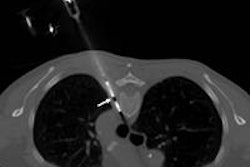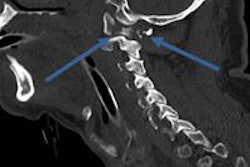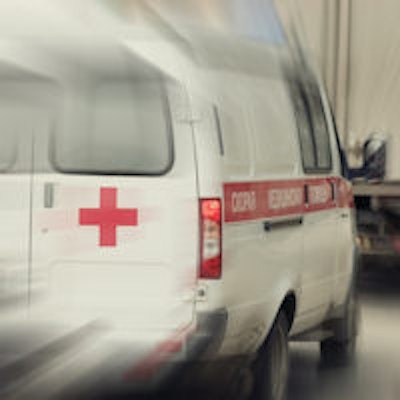
The U.K. Royal College of Radiologists (RCR) has updated its standards outlining good practice for the provision of trauma radiology to severely injured patients, covering management of the patient, the use of quality indicators and the provision of protocols for imaging and reporting.
The 28-page document contains the following 10 standards that must be followed:
The CT scanner should be located adjacent to or in the emergency room. Where this is not the case, radiology departments in major trauma centers and trauma units should plan to make this available in the near future, and patient transfers must be rehearsed and performed according to protocol.
If there is an early decision to request a CT scan, focused abdominal sonography and digital radiography should not cause any delay.
A CT request must comply with the Ionising Radiation (Medical Exposure) Regulations 2000 justification regulations.
There should be clear written protocols for CT preparation and transfer to the scan room.
Whole-body contrast-enhanced CT is the default imaging procedure of choice in the severely injured patient. Imaging protocols should be clearly defined and uniform across a regional trauma network.
Future planning and design of emergency rooms should concentrate on increasing the numbers of severely injured patients stable enough for CT and intervention.
The primary survey report should be issued immediately to the trauma team leader. It should be signed and designated and a copy must be retained in the CT department or radiology information system.
On-call radiologists should provide the final report on the patient within one hour of CT image acquisition. They must have teleradiology facilities at home that allow accurate reports to be issued within one hour of CT image acquisition.
Where patients are transferred, there should be systems in place for locally acquired images to be transferred to the receiving hospital within two hours. Patients should be discussed at regular multidisciplinary team meetings, with learning from events facilitated by an early debrief and changes made to local protocols, as appropriate, to improve patient safety.
The trauma team leader is in charge overall in acute care. Protocol-driven imaging and intervention must be available and delivered by experienced staff.
The RCR document contains a sample request form for a
whole-body trauma CT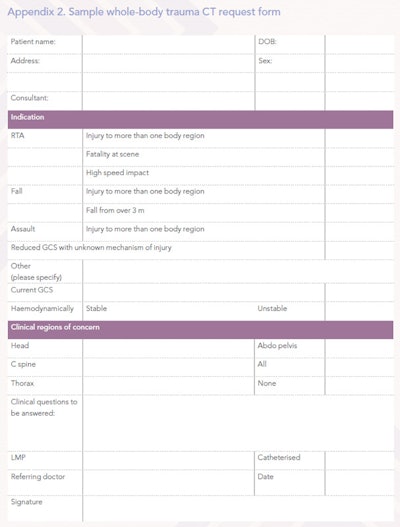
DOB: date of birth, RTA: road traffic accident, GCS: Glasgow Coma Scale, LMP: last menstrual period. Form courtesy of the Royal College of Radiologists.
and a
CT primary assessment form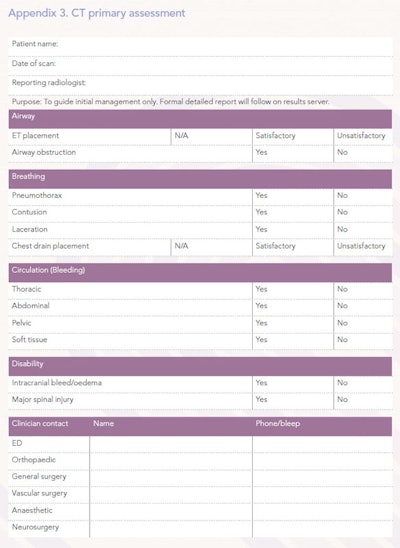
ET: endrotracheal tube, N/A: not available, ED: emergency department. Form courtesy of the Royal College of Radiologists..
The document is designed to complement the National Health Service (NHS) Regional Networks for Major Trauma report. For more details about BFCR[15]5, and to download a free copy, click here.





